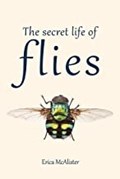Narrow Results By
Important bird and biodiversity areas of Alberta - a Nature Alberta checklist
https://archives.whyte.org/en/permalink/catalogue25165
- Medium
- Library - Book (including soft-cover and pamphlets)
- Published Date
- 2020
- Author
- Nature Alberta
- Publisher
- Nature Alberta
- Call Number
- 04.2 N19i
1 website
- Author
- Nature Alberta
- Publisher
- Nature Alberta
- Published Date
- 2020
- Subjects
- Birds
- Birds--Alberta
- Maps
- Biodiversity
- Abstract
- Alberta has abundant natural areas that support a broad range of birds and wildlife. The Important Bird and Biodiversity Areas (IBA) program is one way in which we help support and promote the protection and conservation of these natural areas that are essential habitat for bird populations, which have been shown to be effective indicators of wider biodiversity. The Important Bird and Biodiveristy Areas Checklist introduces you to Alberta’s IBAs, and highlights a fascinating piece of our province’s natural history that we hope you will take the time to learn about, experience and enjoy. (from Nature Alberta website)
- Notes
- Free with Natur Alberta subscription
- Call Number
- 04.2 N19i
- Collection
- Archives Library
- URL Notes
- Available online via Nature Alberta
Websites
This material is presented as originally created; it may contain outdated cultural descriptions and
potentially offensive content.
Read more.
Return of the bison : a story of survival, restoration, and a wilder world
https://archives.whyte.org/en/permalink/catalogue26218
- Medium
- Library - Book (including soft-cover and pamphlets)
- Published Date
- 2023
- Author
- Di Silvestro, Roger L.
- Publisher
- Seattle, WA : Mountaineers Books
- Call Number
- 04.2 D54r
- Author
- Di Silvestro, Roger L.
- Publisher
- Seattle, WA : Mountaineers Books
- Published Date
- 2023
- Physical Description
- 254 pages : map ; 21 cm
- Subjects
- Bison
- Buffalo
- Conservation
- Environement
- Zoology
- Abstract
- In less than a century, a bison population that once numbered in the millions and stretched across North America was reduced to just a few dozen animals primarily in Yellowstone National Park. DeSilvestro explores one of the greatest conservation comeback stories in American history-- yet its "success" is qualified. Most bison today live in commercial herds, contained like cattle. Are we willing to coexist with them as wild animals who need freedom to roam? -- Excerpt from back cover
- Contents
- In the beginning -- When science favors extinction -- Where buffalo roam, again: early restoration -- American bison step out of the ER -- Private herds : hopes, aspirations, roads to recovery -- Tribes : finding home -- Lost herds : Mexico and Canada -- The way of the wisent -- The last refuge -- Building a future for bison.
- ISBN
- 9781680515831
- Accession Number
- P2024.01
- Call Number
- 04.2 D54r
- Collection
- Archives Library
This material is presented as originally created; it may contain outdated cultural descriptions and
potentially offensive content.
Read more.
The secret life of flies
https://archives.whyte.org/en/permalink/catalogue26215
- Medium
- Library - Book (including soft-cover and pamphlets)
- Published Date
- 2022
- Author
- McAlister, Erica
- Publisher
- Buffalo, New York : Firefly Books
- Call Number
- 04.2 M11t
- Author
- McAlister, Erica
- Publisher
- Buffalo, New York : Firefly Books
- Published Date
- 2022
- Physical Description
- 248 pages : illustrations ; 20 cm
- Subjects
- Insects
- Flies
- Entomology
- Zoology
- Environment
- Abstract
- The Secret Life of Flies takes readers into the hidden world of snail killers, con artists, crazy sex and a great many silly names. It dispels common misconceptions about flies and reveals how truly extraordinary, exotic and important are these misunderstood creatures. In clear language, McAlister explains Diptera taxonomy and forensic entomology, and describes the potential of flies to transform their relationship with humans from one of disease vector to partner in environmental preservation. She has a wonderful knack for storytelling, deftly transforming what could be dry descriptions of biology, reproduction and morphology into entertainment. She takes readers to piles of poo in Ethiopia by way of underground caves, latrines and backyard gardens, and opens the drawers at the Natural History Museum to rhapsodize over her favorite flies. -- Provided by publisher.
- Contents
- Introduction -- The immature ones -- The pollinators -- The detritivores -- The coprophages -- The necrophages -- The vegetarians -- The fungivores -- The predators -- The parasites -- The sanguivores -- The end -- Further reading -- Index -- Picture credits -- Acknowledgements
- Notes
- Previously published: Richmond Hill, Ontario; Buffalo, New York: Firefly Books Ltd., 2017.
- ISBN
- 9780228103929
- Accession Number
- P2024.01
- Call Number
- 04.2 M11t
- Collection
- Archives Library
This material is presented as originally created; it may contain outdated cultural descriptions and
potentially offensive content.
Read more.
Talking with bears : conversations with Charlie Russell
https://archives.whyte.org/en/permalink/catalogue25140
- Medium
- Library - Book (including soft-cover and pamphlets)
- Published Date
- 2020
- Author
- Bradshaw, G.A.
- Publisher
- Rocky Mountain Books
- Edition
- First edition
- Call Number
- 04.2 B72t
1 website
- Author
- Bradshaw, G.A.
- Responsibility
- G.A. Bradshaw
- Edition
- First edition
- Publisher
- Rocky Mountain Books
- Published Date
- 2020
- Physical Description
- 251 pages : illustrations (some colour), portrait
- Abstract
- This is an intimate portrait of Charlie Russell's philosophy of nature. Accompanied by stunning photography, the book is written in narrative form, the way Charlie spoke and shared his stories and knowledge with others. Each of the chapters describes some facet of Charlie's philosophy and experiences through the stories of individual bears and what they taught him: the meaning of trust, respect, attention, love, and much more.
- Contents
- Preface
- Introduction - The bear who rolled stones
- Chapter One - The bear with jeweller's hands
- Chapter Two - The bear at Kurilskoye
- Chatper Three - The bear of Horseshoe Mountains
- Chapter Four - The bear at the bend
- Chapter Five - The bear who said stop
- Chapter Six - The bear who liked to dive
- Chapter Seven - The bear who took advantage
- Chapter Eight - The bear who listened
- Chapter Nine - The bear who cried
- Chapter Ten - Bohm's bear
- Literature cited
- About the author
- ISBN
- 9781771603614
- Accession Number
- P2020-6
- P2020-7 - ref copy
- Call Number
- 04.2 B72t
- Collection
- Archives Library
- URL Notes
- Link to book on Rocky Mountain Books website
Websites
This material is presented as originally created; it may contain outdated cultural descriptions and
potentially offensive content.
Read more.
Rare air : endangered birds, bats, butterflies, & bees
https://archives.whyte.org/en/permalink/catalogue26220
- Medium
- Library - Book (including soft-cover and pamphlets)
- Published Date
- 2023
- Author
- Kaizar, Sarah and Meiser, A. Scott
- Publisher
- Seattle, Washington : Skipstone
- Call Number
- 04.2 K12r
- Publisher
- Seattle, Washington : Skipstone
- Published Date
- 2023
- Physical Description
- 149 pages : color illustrations ; 23 cm
- Subjects
- Zoology
- Birds
- Insects
- Ecology
- Environment
- Abstract
- Rare Air, the culmination of artist Sarah Kaizar's dedication to illustrating endangered fauna, features 66 endangered species of flight--33 birds, 5 bats, 12 bees, and 16 butterflies--presented in her scientifically accurate and utterly engaging pen-and-ink style. Complementing the art are informative and story-driven natural histories of each species by writer A. Scott Meiser, as well as interviews with biologists who are working to sustain some of the same species. An introduction highlights how Kaizar developed this project, while the "How to Get Involved" appendix provides helpful tips on actions readers can take to help these creatures. Kaizar's work informs readers about the world around them in a way that is beautiful and engaging, while also examining the environmental conditions that put these species at risk. Rare Air broadens the conversation about environmental study and inspires readers across the country to care for our winged creatures. -- Provided by publisher.
- Contents
- Introduction : conservation on the wing -- Rare air species. Field feature : bird data : counts, migrations, trends -- Field feature : indigenous resource managements -- Field feature : bat conservation international -- Field feature : nurdle patrol -- Acknowledgments -- References -- How to get involved -- Species index.
- ISBN
- 9781680515510
- Accession Number
- P2024.01
- Call Number
- 04.2 K12r
- Collection
- Archives Library
This material is presented as originally created; it may contain outdated cultural descriptions and
potentially offensive content.
Read more.
Villain, vermin, icon, kin : wolves and the making of Canada
https://archives.whyte.org/en/permalink/catalogue25704
- Medium
- Library - Book (including soft-cover and pamphlets)
- Published Date
- 2022
- Author
- Rutherford, Stephanie
- Publisher
- Montreal ; Kingston ; London ; Chicago : McGill-Queen's University Press
- Call Number
- 04.2 R93v
- Author
- Rutherford, Stephanie
- Publisher
- Montreal ; Kingston ; London ; Chicago : McGill-Queen's University Press
- Published Date
- 2022
- Physical Description
- xiii, 239 pages : illustrations ; 24 cm
- Abstract
- A wolf's howl is felt in the body. Frightening and compelling, incomprehensible or entirely knowable, it is a sound that may be heard as threat or invitation but leaves no listener unaffected. Toothsome fiends, interfering pests, or creatures wild and free, wolves have been at the heart of Canada's national story since long before Confederation. Villain, Vermin, Icon, Kin contends that the role in which wolves have been cast - monster or hero - has changed dramatically through time. Exploring the social history of wolves in Canada, Stephanie Rutherford weaves an innovative tapestry from the varied threads of historical and contemporary texts, ideas, and practices in human-wolf relations, from provincial bounties to Farley Mowat's iconic Never Cry Wolf. These examples reveal that Canada was made, in part, through relationships with nonhuman animals. Wolves have always captured the human imagination. In sketching out the connections people have had with wolves at different times, Villain, Vermin, Icon, Kin offers a model for more ethical ways of interacting with animals in the face of a global biodiversity crisis. -- Provided by publisher.
- Contents
- PART ONE: VILLIANS AND VERMIN -- Fear: settler encounters with wildness out of place -- Disgust: bounties and bureaucracies of extermination -- PART TWO: RECUPERATING THE WOLF -- Passion: writing the wolf in Canadian literature -- Curiosity: the scientific reimagining of a predator -- Devotion: wolf live in modern times -- PART THREE: KNOWING THE WOLF -- Ambivalence: dwelling in multispecies assemblages -- Empathy: Indigneous teachings offer a way out (and in) -- Epilogue: the hazards of a symbol
- ISBN
- 9780228011088
- Accession Number
- P2023.07
- Call Number
- 04.2 R93v
- Collection
- Archives Library
This material is presented as originally created; it may contain outdated cultural descriptions and
potentially offensive content.
Read more.
What bears teach us
https://archives.whyte.org/en/permalink/catalogue25253
- Medium
- Library - Book (including soft-cover and pamphlets)
- Published Date
- 2020
- Author
- Elmeligi, Sarah
- Marriott, John E.
- Publisher
- [Victoria, British Columbia] : Rocky Mountain Books Ltd.
- Edition
- First
- Call Number
- 04.2 El6w
1 website
- Author
- Elmeligi, Sarah
- Marriott, John E.
- Responsibility
- Sarah Elmeligi (author)
- John E. Marriott (photographer)
- Edition
- First
- Publisher
- [Victoria, British Columbia] : Rocky Mountain Books Ltd.
- Published Date
- 2020
- Physical Description
- 223 pages : illustrations
- Subjects
- Bears
- Bears, Grizzly
- Ecology
- Abstract
- A lavishly illustrated book that explores the complex behavioural characteristics of North America’s largest land carnivores by examining the bear–human relationship from the bear’s perspective. From the first moment Sarah Elmeligi came eye to eye with a grizzly bear, her life changed. In a moment that lasted mere seconds, she began to question everything she thought she knew about bears. How could this docile creature be the same one with a fearsome reputation for vicious attacks? Through years of research, Elmeligi grew to appreciate that bears are so much more than data points, stunning photos, and sensational online stories. Elmeligi expertly weaves the science of bear behaviour with her passionate account of personal encounters. Dive into the life of a bear biologist as Sarah’s colleagues recount their own “stories from the field” – intimate moments with bears where they were connected to an animal with personality, decision-making capabilities, and a host of engaging behaviours. Join Elmeligi and Marriott on a journey that examines and shares the behaviour of black, grizzly, and polar bears in North America in a way you’ve never seen before. What Bears Teach Us will surprise you, inspire you, foster your curiosity, and teach you something new about bears and maybe even yourself. (From publisher's website)
- Contents
- Intro -- Title Page -- Dedication -- Table of Contents -- Foreword -- Acknowledgements -- Introduction -- Bears and People in North America: An Ever-Evolving Dynamic -- Chapter 1: Patience and Tolerance -- Seafood or Berries for Dinner? -- Life on the British Columbia Coast -- Life in Alberta's Mountains -- Management Conundrums -- Stories from the Field: Mating Season in the Khutz -- Chapter 2: Adaptation and Coexistence -- Who's Afraid of the Big Bad Bear? It Depends... -- Predictability as the Mother of Adaptation -- Coexistence -- Stories from the Field: There's a Bear in My Parking Lot! A Human Perspective by Courtney Hughes, PhD -- Chapter 3: Knowing When to Walk Away -- Bears That Stand Their Ground -- The Role People Play -- What We Learn -- Stories from the Field: A Quiet Run-In by Dan Rafla -- Chapter 4: Resilience -- Arctic Living -- Resilience in the Face of Climate Change -- What, Where and When to Eat -- Human-Bear Conflict -- A Future for Polar Bears -- Stories from the Field: Arctic Non-Adventures by Andrew Derocher -- Chapter 5: Living in the Present Based on Lessons from the Past -- How Bears Learn -- Lessons Learned From and Around People -- The Story of Bear 148 Stories from the Field: Personality Shapes Who You Are by Sydney R. Stephens -- Chapter 6: Just Being Yourself -- Stories from the Field: Swimming is for the Birds, not the Bears -- Being Born Different -The Story of Booboo and Yogi by Julia McKay -- Bibliography -- Notes
- ISBN
- 9781771603935
- Accession Number
- P2020.07
- Call Number
- 04.2 El6w
- Location
- Reading Room
- Collection
- Archives Library
- URL Notes
- Publisher's website
Websites
This material is presented as originally created; it may contain outdated cultural descriptions and
potentially offensive content.
Read more.
Traces of the animal past : methodological challenges in animal history
https://archives.whyte.org/en/permalink/catalogue25705
- Medium
- Library - Book (including soft-cover and pamphlets)
- Published Date
- 2022
- Publisher
- Calgary, Alberta, Canada : University of Calgary Press
- Call Number
- 04.2 B64t
- Responsibility
- Edited by Jennifer Bonnell and Sean Kheraj
- Publisher
- Calgary, Alberta, Canada : University of Calgary Press
- Published Date
- 2022
- Physical Description
- vii, 419 pages : illustrations (some color) ; 24 cm
- Abstract
- Leading scholars in animal history confront key questions of how we can know and understand the more-than-human past, showcasing the innovative methods historians use to discover and explain how animals fit into our collective histories. Understanding the relationships between humans and animals is essential to a full understanding of both our present and our shared past. Across the humanities and social sciences, researchers have embraced the 'animal turn,' a multispecies approach to scholarship, with historians at the forefront of new research in human-animal studies that blends traditional research methods with interdisciplinary theoretical frameworks that decenter humans in historical narratives. These exciting approaches come with core methodological challenges for scholars seeking to better understand the past from non-anthropocentric perspectives. Whether in a large public archive, a small private collection, or the oral histories of living memories, stories of animals are mediated by the humans who have inscribed the records and organized archival collections. In oral histories, the place of animals in the past are further refracted by the frailty of human memory and recollection. Only traces remain for researchers to read and interpret. Bringing together seventeen original essays by a leading group of international scholars, Traces of the Animal Past showcases the innovative methods historians use to unearth and explain how animals fit into our collective histories. Situating the historian within the narrative, bringing transparency to methodological processes, and reflecting on the processes and procedures of current research, this book presents new approaches and new directions for a maturing field of historical inquiry.-- Provided by publisher.
- Contents
- Introduction: traces of the animal past / Bonnell, Jennifer and Kheraj, Sean -- PART I: EMBODIED HISTORIES -- Kicking over the traces? freeing the animal from the archive / Swart, Sandra -- Occupational hazards: honeybee labour as an interpretive device in animal history / Bonnell, Jennifer -- Hearing history through hoofbeats: exploring equine volition and voice in the archive / Stallones Marshall, Lindsay -- PART II: TRACES -- Who is greyhound? reflections on the non-human digital archive / Nance, Susan -- Accessing animal health knowledge: popular educators and veterinary science in rural Ontario / Hodgins, Jody -- Animal Cruelty, metaphoric narrative, and the hudson's bay company, 1919-1939 / Colpitts, George -- PART III: THE UNKNOWABLE ANIMAL -- Vanishing flies and the lady entomologist / McNeur, Catherine -- Guinea Pig agnotology / Dean, Joanna -- Tuffy's cold war: science, memory, and the US navy's dolphin / Colby, Jason M. -- The elephant in the archive / Rothfels, Nigel -- PART IV: SPATIAL SOURCES AND ANIMAL MOVEMENT -- Making tracks: a grizzly and entangled history / Campbell, Colleen and Loo, Tina -- Spatial analysis and digital urban animal history / Kheraj, Sean -- Visualizing the animal city: digital experiments in animal history / Robichaud, Andrew -- What's guanaco? tracing the llama diaspora through and beyond South America / Wakild, Emily -- PART V: LOOKING AT ANIMALS -- Hidden in plain sight: how art and visual culture can help us think about animal histories / Cronin, J. Keri -- Creatures on display: making an animal exhibit at the archives of Ontario / Young, Jay -- Portraits of extinction: encountering bluebuck narratives in the natural history museum / Jørgensen, Dolly -- Epilogue: combinations and conjunction / Ritvo, Harriet
- ISBN
- 9781773853840
- Accession Number
- P2023.07
- Call Number
- 04.2 B64t
- Collection
- Archives Library
This material is presented as originally created; it may contain outdated cultural descriptions and
potentially offensive content.
Read more.







